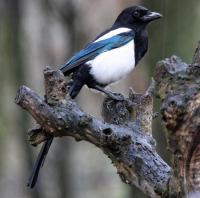- Home
- FAQs
- Customer Video Gallery
- Customer Photo Gallery
- Bird Facts
- Bird Food Blog
- Bird Information
- Feeding Advice
- Small Animal Information
- A to Z of Guinea Pigs
- A to Z of Hamsters
- A to Z of Rabbits
- Basic Care for Guinea Pigs
- Basic Care for Hamsters
- Basic Care for Rabbits
- Basic care for Chinchillas
- Basic care for Ferrets
- Basic care for Gerbils
- Basic care for Mice
- Basic care for Rats
- Buying a Healthy Small Animal
- Does your Reptile need a Licence
- Equipment for Ferrets
- Equipment for Hamsters
- Equipment for Mice
- Equipment for your Chinchilla
- Equipment for your Gerbil
- Equipment for your Guinea Pig
- Equipment for your Rabbit
- Keeping a House Rabbit
- Dog Information
- Cat Information
- Customer Information
- Fat Balls
- Suet Pellets
- Straights
- Seed Mixes
- Suet Treats
- Mealworms
- Bird Feeders
- My Account

| Scientific Name | Sylvia communis |
| Breeding | early May |
| Fledge Days | 10-12 |
| Incubation Days | 11-13 |
| Lifespan | 2 years |
| Number of Clutches | 1-2 |
| Number of Eggs | 3-7 |
| Size | 14 cm |
| Weight | 16g |
| Wingspan | 18.5-23 cm |
Bird Family : Warblers and Allies
Whitethroat Facts - Information About Whitethroat
Whitethroat - Sylvia communis
The Whitethroat is a common summer visitor. It is a member of the Warbler Family that spends its winter in Spain and Africa, arriving here in April and departing October. It is unusual in the warbler world as it is happy to eat Fruit as well as Insects. The Whitethroat is a large Warbler and normally very noticeable due to its habit of calling / singing frequently.
Identification:
Adult
- Whitethroats are reasonably large and stocky for a Warbler, measuring in at 15cm.
- The plumage of males and females differ only in the colour of head and intensity of colour over the rest of the bird.
- Head and nape in males is a mid-grey with white eyelids, in the females head is brownish, both show a white throat, brighter in the male.
- The whole of the upper parts including tail, of both sexes are greyish brown with distinctly rusty brown wings.
- The underparts are a pale buff, with a slightly pink tone in the males.
- The under tail/vent of both sexes is white.
- Males show a bluey grey head, white eyelids and obvious white throat, a two tone horn and black bill.
- Female’s heads differ only in colour and intensity, a grey brown.
- Bill and horn is black.
- Legs are pale brown.
- Eyea are black (with white eye ring in male).
- Tail is longish, darker and white sided.
Juvenile
- Juveniles appear from mid-May onwards and during the first year look similar to adult females.
- Young birds have the same bodily plumage of the adults, similar to that of the female.
- Bill and legs pale brown, eye black.
Status and Distribution
The Whitethroat is an abundant breeding summer migrant arriving in the UK in late March-April, breeding takes place in May. The Whitethroat occurs in all counties throughout the UK, however, like many summer migrants it is less numerous in the extreme north of Scotland.
British summer populations of Whitethroats stands at just over a million pairs.
Habitat/Food
Whitethroats occur in all habitat types throughout the UK, woodlands, parks, gardens, farmland, hedgerows indeed any open country habitat with suitable scrub. Whitethroats feed on Insects and Fruit.
Song/Call
Call is loud and consists many notes, clicks, rattles and nasal rasps. The most frequent is a repeated nasal drawn ‘chair chair chair chair’.
Song is a scratchy mix of nasal clicks and sweet, flutey notes with churs delivered in a fast jerky verse.









